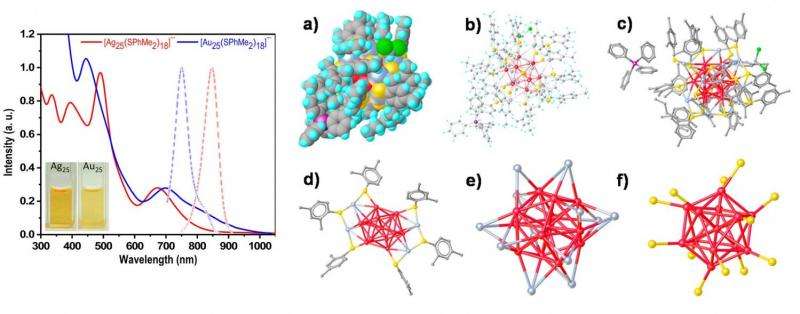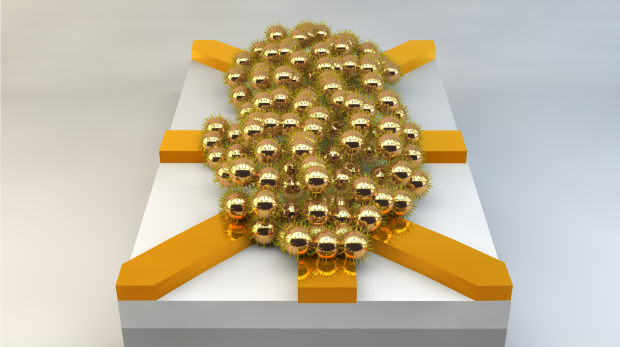The resistance is coming from the Nanotechnology Industries Association (NIA) and it concerns some upcoming legislation in the European Union. From a Sept. 24, 2015 news item on Nanowerk,
In October [2015], the European Union Parliament is expected to vote on legislation that repeals Regulation No 258/97 and replaces it with ‘Regulation on Novel Foods 2013/045(COD)’, which will fundamentally change how nanomaterials in food are regulated. The Nanotechnologies Industries Association has issued the following statement on the upcoming vote:
After reviewing the draft European legislation updating the ‘Regulation on Novel Foods 2013/045(COD)’, it has become clear to the Nanotechnology Industries Association and within the nanotech supply chain that the proposed changes are unworkable. It is vague, unclear and contradicts firmly established nanomaterial regulations that have been effectively used by European institutions for years. Implementing it will create new, unnecessary challenges for SMEs, the drivers of economic growth, aiming to use nanotechnology to improve the daily lives of Europeans.
A Sept 24, 2015 NIA press release, which originated the news item, outlines the concerns,
To include materials that are “composed of discrete functional parts….which have one or more dimensions of the order of 100 nm or less” fundamentally changes the accepted definition of engineered nanomaterials and risks countless products being caught in disproportional regulation. The term “discrete functional parts” adds further complexity as it has little scientific basis, opening it up to a wide range of interpretation when put into practice. This will drive innovators to avoid any products that could possibly be caught in this broad, unclear definition and, ultimately, consumers will miss out on the benefits.
Innovators that can overcome this uncertainty and continue to utilize cutting-edge nanomaterials, will then face a new requirement that their safety tests be ‘the most up-to-date’ – a vague term with no formal definition. This leaves companies subject to unpredictable changes in testing requirements with little notice, a burden no other industry faces.
Finally, if implemented, the text would require the European commission to change the definition of ‘engineered nanomaterial’ in the Food Information to Consumers Regulation. However, regulations cannot be updated overnight, which means companies will be faced with two parallel and competing definitions for an indeterminate period of time.
The Council claims that this regulation will ‘reduce administrative burdens,’ however, we believe it will achieve the opposite. Industry and innovators need regulation that is clear and grounded in science. It ensures they know when they are subject to nanomaterial regulations and are prepared to meet all the requirements. This approach provides them with predictability in regulations and assures the public that the nanomaterials used are safe. A conclusion all parties can welcome.
NIA urges Members of the European Parliament not to create uncertainty in a sector that is a leader in European innovation, and to engage in direct discussions with the European Commission, which is already working on a review of the European Commission Recommendation for a Definition of a Nanomaterial with the Joint Research Centre.
While it might be tempting to lambaste the NIA for resisting regulation of nanomaterials in foods, the organization does have a point. Personally, I would approach it by emphasizing that there has been a problem with the European Union definition for nanomaterials (issued in 2011) and that is currently being addressed by the Joint Research Centre (JRC), which has issued a series of three reports the latest being in July 2015. (Note: There have been issues with the European Union definition since it was first issued and it would seem more logical to wait until that matter has been settled before changing regulations.) From a July 10, 2015 JRC press release,
The JRC has published science-based options to improve the clarity and the practical application of the EC recommendation on the definition of a nanomaterial. This is the last JRC report in a series of three, providing the scientific support to the Commission in its review of the definition used to identify materials for which special provisions might apply (e.g. for ingredient labelling or safety assessment). The Commission’s review process continues, assessing the options against policy issues.
As the definition should be broadly applicable in different regulatory sectors, the report suggests that the scope of the definition regarding the origin of nanomaterials should remain unchanged, addressing natural, incidental and manufactured nanomaterials. Furthermore, size as the sole defining property of a nanoparticle, as well as the range of 1 nm to 100 nm as definition of the nanoscale should be maintained.
On the other hand, several issues seem to deserve attention in terms of clarification of the definition and/or provision of additional implementation guidance. These include:
- The terms “particle”, “particles size”, “external dimension” and “constituent particles”.
- Consequences of the possibility of varying the current 50% threshold for the particle number fraction (if more than half of the particles have one or more external dimensions between 1 nm and 100 nm the material is a nanomaterial): variable thresholds may allow regulators to address specific concerns in certain application areas, but may also confuse customers and lead to an inconsistent classification of the same material based on the field of application.
- Ambiguity on the role of the volume-specific surface area (VSSA): The potential use of VSSA should be clarified and ambiguities arising from the current wording should be eliminated.
- The methods to prove that a material is not a nanomaterial: The definition makes it very difficult to prove that a material is not a nanomaterial. This issue could be resolved by adding an additional criterion.
- The list of explicitly included materials (fullerenes, graphene flakes and single wall carbon nanotubes even with one or more external dimensions below 1 nm): This list does not include non-carbon based materials with a structure similar to carbon nanotubes. A modification (or removal) of the current list could avoid inconsistencies.
- A clearer wording in the definition could prevent the misunderstanding that products containing nanoparticles become nanomaterials themselves.
Many of the issues addressed in the report can be clarified by developing new or improved guidance. Also the need for specific guidance beyond clarification of the definition itself is identified. However, relying only on guidance documents for essential parts of the definition may lead to unintended differences in the implementation and decision making. Therefore, also possibilities to introduce more clarity in the definition itself are listed above and discussed in the report.
JRC will continue to support the review process of the definition and its implementation in EU legislation.
…
Here is an Oct. 18, 2011 posting where I featured some of the issues raised by the European Union definition.

